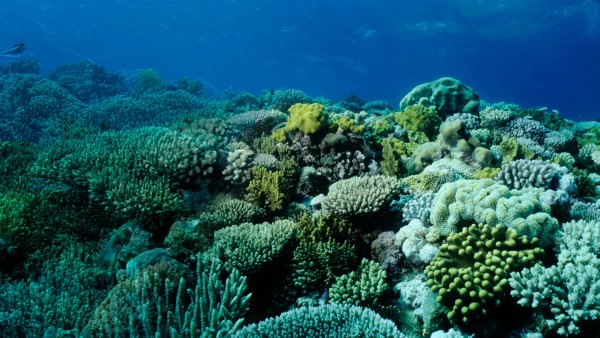October 25, 2022, Zurich, Switzerland
RepRisk launches first-of-its-kind biodiversity risk tool, finds 73% of oil and gas projects are near environmentally sensitive sites
# New dataset, RepRisk Geospatial, identifies proximity of extractive sector projects to Key Biodiversity Areas and protected areas
ESG data science firm RepRisk and the Integrated Biodiversity Assessment Tool (IBAT) Alliance collaborated to unlock biodiversity insights via RepRisk Geospatial Analytics, which launches today. An extension of RepRisk’s flagship product, the RepRisk ESG Risk Platform, Geospatial Analytics facilitates robust biodiversity risk assessment for market practitioners and solves common pitfalls around quality and availability of both biodiversity and proximity data.
RepRisk Geospatial provides powerful biodiversity due diligence data, showing the proximity of 60,000+ mining and oil and gas projects to 270,000+ protected areas and 16,000+ Key Biodiversity Areas – then rolling those insights up to project owner and operator companies. These insights provide useful information to market practitioners asking questions like, “does my client operate any pipelines near protected areas?” or “does the mine in my portfolio overlap with areas of high biodiversity value?”
“RepRisk Geospatial Analytics is ground-breaking for investors. It is essential to understand where companies own and operate assets before it is possible to understand the potential biodiversity related risk of an investment.” said Edward Ellis, Business Manager at IBAT Alliance. “RepRisk links assets on the ground to owner and operator companies, enabling investors to better understand aspects of their nature-related risk. When combined with the existing risk information in RepRisk’s ESG Risk Platform, investors are able to analyse biodiversity in the Environmental pillar of ESG in an even more multi-dimensional way.”
A preliminary analysis of RepRisk Geospatial Analytics reveals that:
- Approximately 32% of natural and mixed UNESCO World Heritage sites are currently within 1km of an extractive project.
- 52% (470 out of 900) of Alliance for Zero Extinction Sites, which are home to the last of some of the world's most threatened species, are within 10km of an extractive project.
- Approximately 8,400 or 81% of Oil and Gas pipelines worldwide are within 10 km of at least one environmentally sensitive site.
RepRisk Geospatial is emerging alongside the Taskforce for Nature Related Financial Disclosures (TNFD)'s progress on a biodiversity risk management and reporting framework, to be adopted by financial institutions and corporates. "The TNFD has made it clear: geospatial data is essential for reporting on corporate biodiversity risk and moving toward a nature-positive economy," says Alexandra Mihailescu Cichon, Executive Vice President of Sales and Marketing at RepRisk. “RepRisk Geospatial Analytics not only brings clients in step with emerging frameworks like TNFD but empowers them with the most cutting-edge technology and the world’s most comprehensive ESG dataset. Nature doesn’t disclose anything, and ultimately biodiversity risk and financial risk are one and the same. It’s time for financial markets to integrate biodiversity risk considerations into their decision-making processes."
Future applications for RepRisk Geospatial Analytics include proximity data on projects beyond the extractive sector and data on emissions and deforestation.
About RepRisk
RepRisk is the world’s most respected Data as a Service (DaaS) company for reputational risks and responsible business conduct. Since 2007, RepRisk’s data has been trusted by the world’s leading banks, investment managers, Fortune 500 companies, sovereign wealth funds, and organizations such as the OECD and UN. Combining advanced AI with deep human expertise, and a proven methodology at the core, RepRisk’s solutions bring peace of mind, enabling clients to ‘know more, be sure, and act faster’. Our pioneering solutions help to strengthen due diligence processes across ESG topics, such as biodiversity, deforestation, human rights, and corruption, empowering clients to identify, monitor, and mitigate reputational, compliance, and financial risks. Headquartered in Zurich, and with offices in Toronto, New York, London, Berlin, Manila, and Tokyo, we stay close to clients and bring an independent lens to the industry. United by our shared belief in the power of data, our 400 people are proud to be setting the global standard for business conduct data and driving positive change through transparency.
Visit us at reprisk.com and follow us on LinkedIn.
About IBAT
Launched in 2008 and headquartered in Cambridge, UK, the Integrated Biodiversity Assessment Tool (IBAT) is an Alliance between BirdLife International, the United Nations Environment Programme World Conservation Monitoring Centre (UNEP-WCMC), The International Union for Conservation of Nature (IUCN) and Conservation International. IBAT is the tool through which commercial access to authoritative biodiversity datasets and derived data layers can be licensed including the IUCN Red List of Threatened Species™, the World Database on Protected Areas (WDPA) and the World Database of Key Biodiversity Areas (WDKBA). By licensing data via IBAT, commercial users contribute to the update and maintenance of these essential conservation datasets. Learn more at ibat-alliance.org.



